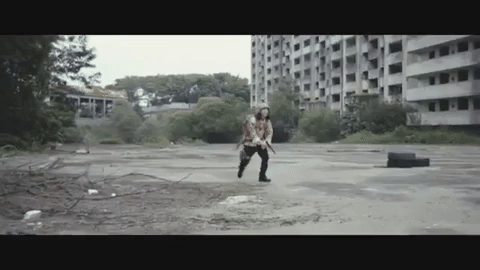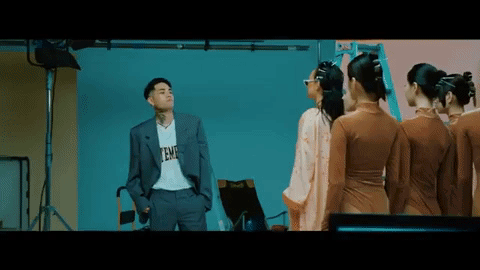FROM THE BRONX TO SEOUL: AN ANALYSIS OF POPULAR SOUTH KOREAN HIP-HOP AND RAP MUSIC VIDEOS
BY RICKY RATH
FINDINGS
Materialism dominated the visual content by a far margin. There was a stunning 57 instances of materialism coded out of the possible 84. Specifically, jewelry was highly flashed and displayed in music videos through layers gold and silver chains. Streetwear brand clothing such as Supreme and BAPE were also heavily emphasized on rappers feeding into the culture of materialism.

GRAPH CREATED BY RICKY RATH
Following materialism, visual content categories of misogyny, violence, drugs, and alcohol were closely knit. Misogyny often appeared in the forms of subtle casting of women portrayed as objects in the background of rappers but for most instances, they weren’t shown in outrageously revealing clothing. But there was one music video from Jay Park titled “MOMMAE,” filmed in a club that featured continuous half-naked women dancing, drinking, and vaping. Filmed in 2015, the video accumulated 29.6 million views and included a 19-year-old age restriction.
Violence followed closely behind misogyny but typically involved aggressive gestures. Guns were sparingly featured and if they were, guns would appear in the backgrounds in short, brief cuts. Stone Music Entertainment’s “TIKI TAKA,” was the only video that involved a gun-related killing and death but it was framed in a military shooter video game simulation. Interestingly the video was restricted to 12 years old and above where more sexualized videos received higher age restrictions.
Drugs and alcohol were less prevalent in videos and there was only two instances of drugs. In BTS’ “Come Back Home,” there was a quick flash of prescription drugs and in Jay Park’s “You Know,” marijuana was seen being smoked by the rapper Okasian. Alcohol was common in a handful of videos especially liquor and beer. Displays of love, admiration, and emotions was the least dominant visual content among the videos coded. Although the lowest, there were six of the 28 videos coded on the visual display of love and relationship.

GIF FROM TIKI-TAKA 티키타카 - VMC MUSIC VIDEO
The second part of this study focused on the lyrical themes of the songs featured in the music video and its correlation to the visuals. Alcohol was the most dominant theme and subject that appeared within the lyrics followed closely behind by braggadocio. Although materialism is seen as the most dominant visual content, it is the third ranked in lyric themes. As a contrast to American hip-hop and rap, misogyny was almost non-existent in the lyrics and themes of love and sex were placed much higher.

GRAPH CREATED BY RICKY RATH
GIF AND LYRICS FROM Peach (feat. 수란) -REDDY
"You are my peach, please, my light
Sweet, your tone, your gesture, what about me?
You are my peach, please, my light
Sweet, your tone, your gesture, what about me?
I want to hold your hand, tonight, at night "


"I'll give you tonight, you talk too much.
I just want you, too. I just do.
I just wanna be your peach, peach.
Friday, you say you want to hold my hand.
I want you too, let your shoulders touch mine."
-REDDY in "Peach."
-SURAN 수란 in "Peach."
"Peach" is a prime example of how love, sex, admiration lyrical themes intersect with each other. The song also features a female perspective verse.
As a third portion of this study, I compared the coding data between major and independently driven labels. Among the visual content, both label levels had nearly the same level of materialism but there is considerable differences in the other categories. Although alcohol is displayed in independent labels more, major labels hosted controversial content of violence and misogyny more often while independent labels showcased more love-related content in their videos. Along my analysis of lyrical themes, there were not any major differences between label levels.

